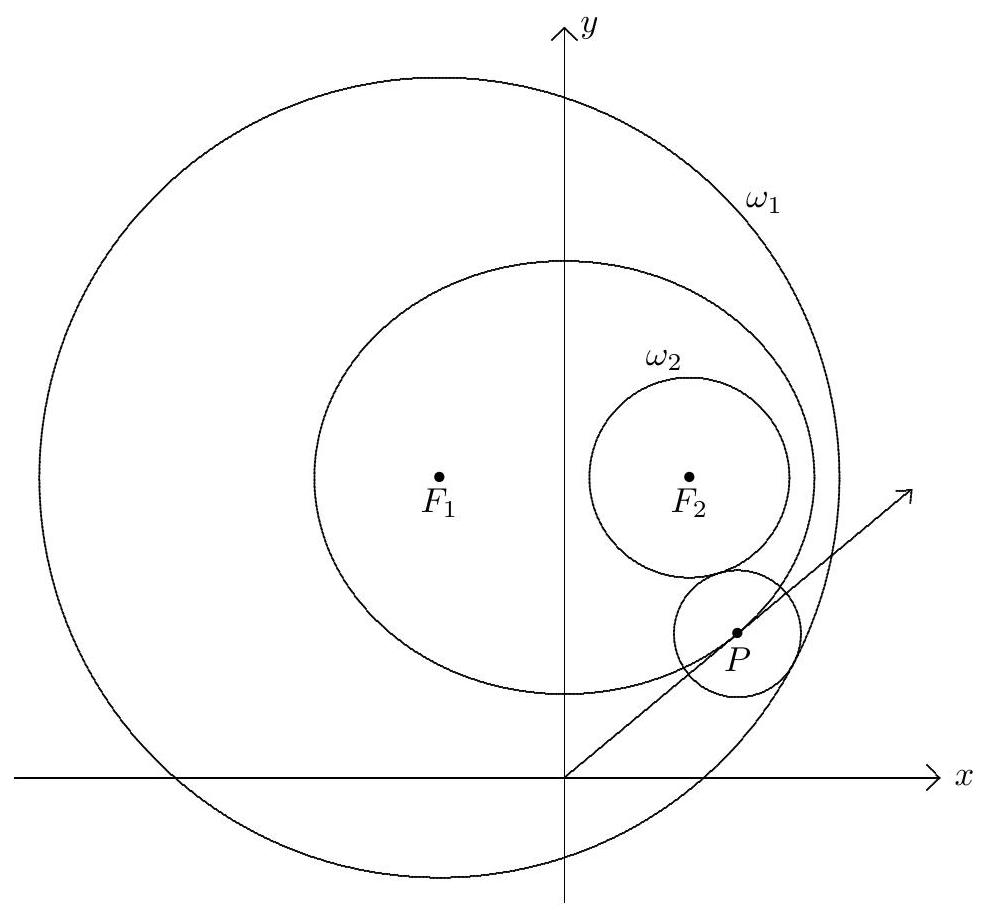Problem:
Let ω1 and ω2 denote the circles x2+y2+10x−24y−87=0 and x2+y2− 10x−24y+153=0, respectively. Let m be the smallest positive value of a for which the line y=ax contains the center of a circle that is internally tangent to ω1 and externally tangent to ω2. Given that m2=p/q, where p and q are relatively prime positive integers, find p+q.
Solution:
Complete the square to obtain (x+5)2+(y−12)2=256 and (x−5)2+(y−12)2=16 for ω1 and ω2, respectively. Hence ω1 is centered at F1(−5,12) with radius 16 , and ω2 is centered at F2(5,12) with radius 4. Let P be the center of the third circle, and let r be its radius. Then PF1=16−r and PF2=4+r. Thus P is on the ellipse with foci F1,F2 and PF1+PF2=20. Therefore the coordinates of P satisfy
100x2+75(y−12)2=1
which is equivalent to 3x2+4y2−96y+576=300. Because P is on the line with equation y=ax, conclude that the x-coordinate of P satisifies
(3+4a2)x2−96ax+276=0
In order for P to exist, the discriminant of the above quadratic equation must be nonnegative, that is, (−96a)2−4⋅276⋅(4a2+3)≥0. Thus a2≥69/100, so m2=69/100, and p+q=169.
Note that a attains its minimum when the line with equation y=ax is tangent to the ellipse.
The problems on this page are the property of the MAA's American Mathematics Competitions
